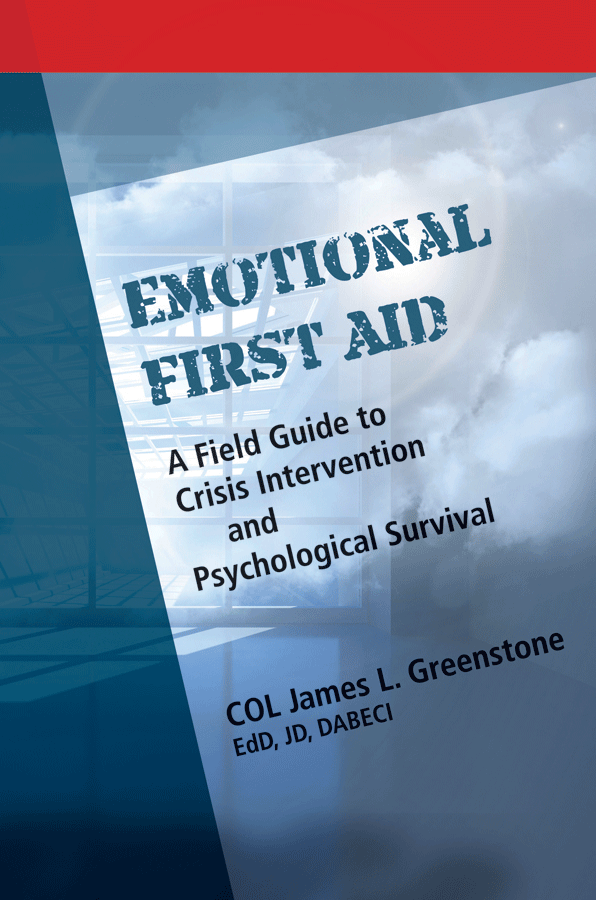Emotional First Aid and Crisis Intervention
More and more behavioral healthcare professionals and paraprofessionals are being asked to leave the relative comfort of their usual workplace to work in disaster scenarios.
This timely publication, Emotional First Aid, is a crisis intervention field guide for behavioral health first and second responders. First and second responders, from novices to those with years of experience, will find information to help them respond to emergencies more effectively. Being unprepared distracts from your mission and steers you away from responding in the future. Just because you may be ready and willing to go does not mean, in and of itself, that you are prepared to go. In this book, you will find many of those preparation and response concerns addressed. You will receive directions and guidelines to help make your experience in this relatively new venue rewarding.
Highlights from Emotional First Aid - A Field Guide to Crisis Intervention and Psychological Survival include the following:
-
Essential crisis intervention and emotional first aid procedures
-
Force protection procedures and resiliency information
-
Information for adjusting one's mindset to the disaster scenario
-
What to take with you when you go
-
Unique concerns about which each responder should be aware
-
Reproducible reference forms, tests, and tables for use before, during, and after responding to critical situations.
Chapters include:
-
Chapter 1 – Traumatic Crisis and Its Aftermath: What are we up against?
Understanding the situation is vital to providing helpful Emotional First Aid.
-
Chapter 2 – What to Do and How to Do It: Heading the need for speed.
Respond now. Crisis intervention needs to be timely to be effective.
-
Chapter 3 – Crisis Triage: Attending to those who can benefit the most
Those who can survive must survive. The ability to triage effectively is paramount to providing effective crisis intervention.
-
Chapter 4 – Intervener Survival: Indispensable Self-Care.
Effective force protection must be in place if effective emotional first aid is to happen.
-
Chapter 5 – Victim and Sufferer Survival: Helping to bounce back.
Resiliency will win out.
-
Chapter 6 – Altered Standards of Care: A subject no one wants to talk about.
Prepare for this eventuality, or don't get involved in crisis intervention.
-
Chapter 7 – Hostile Environments: Knowing what to get into – Knowing when not to go.
Prepare for the worst.
-
Chapter 8 – Preparation: "The Orange Bag Denial"
Get your stuff together now, so you are ready for the call. Emotional first aid can't wait for you to prepare.
-
Chapter 9 – Response Protocols: Waiting for the Word
If you are not called, do not go.
-
Chapter 10 – Law and Order: SCU (Special Crisis Intervention Understanding)
Even responders must know and obey the law.
-
Chapter 11 – Interpreters and Their Effective Use: Speaking the Same Language
Accurate communication is foremost to effective crisis intervention.
-
Chapter 12 – A History of the Crisis Intervention Movement and Discipline
Remember the past to avoid repeating past mistakes.
Become a trusted professional responder by being prepared!
Emotional First Aid Reproducible Worksheets
All the forms and charts found in Appendix A of the book are available as digital download PDFs. These worksheet masters make it easier to print off for your use. You must purchase or already own the book to order the download.

